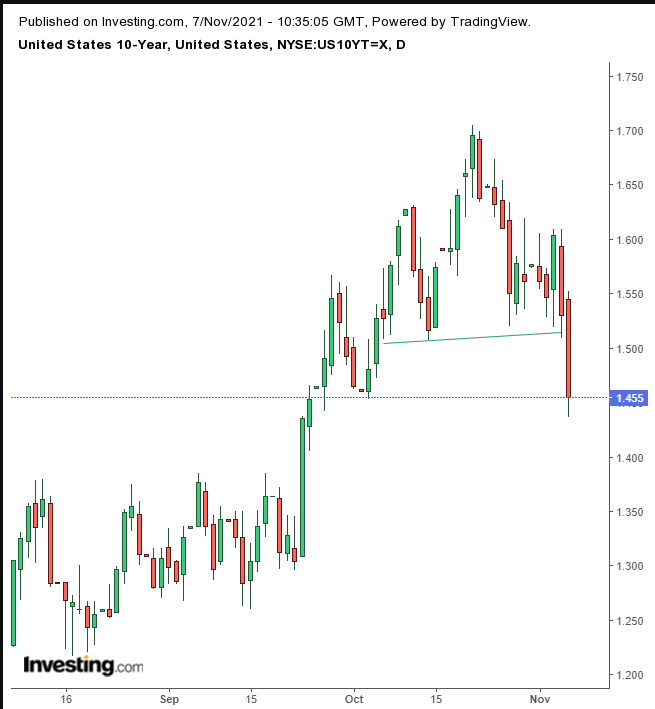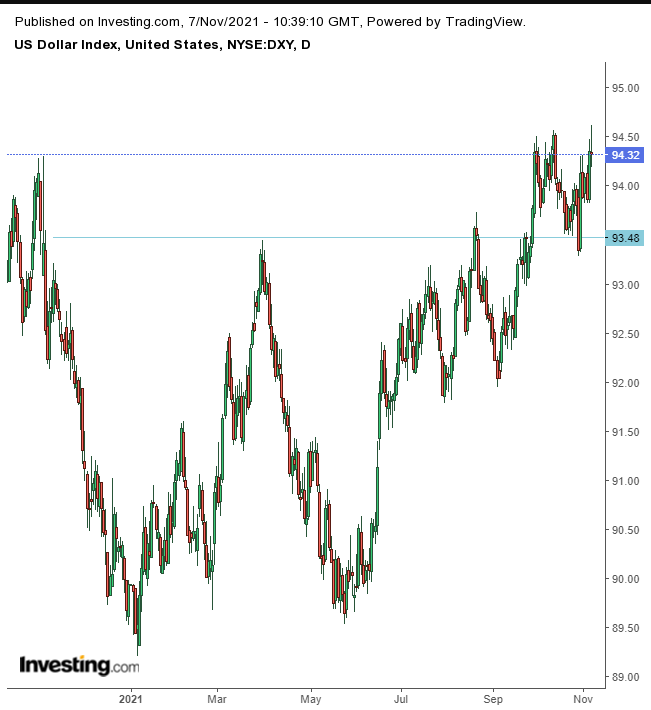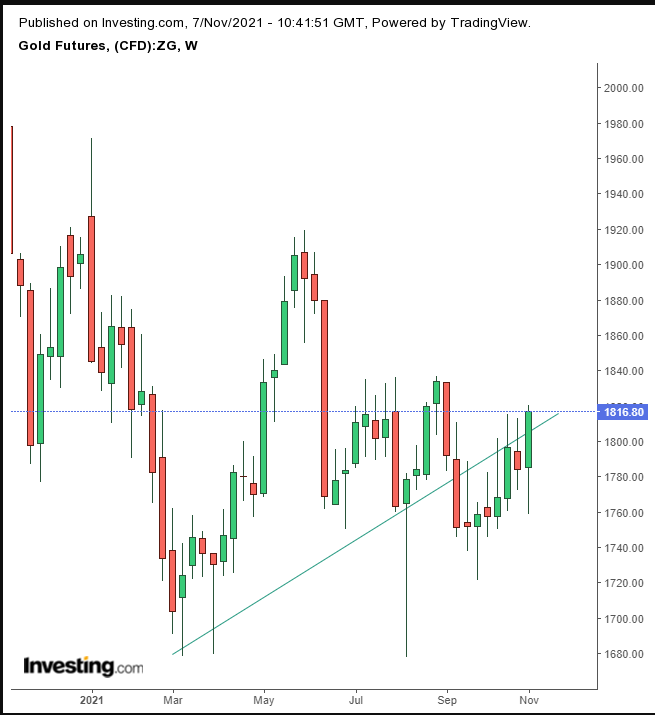- Economic data, new COVID pill boost investor confidence
- Value stocks have the edge over technology shares
- Inflation remains the most significant risk
Despite inflation remaining an ongoing worry for investors, current market drivers—strong earnings and generally robust US economic data including Friday's surprisingly strong Nonfarm Payrolls print—should help pave the way for a continuation of the record-setting equity market streak seen last week during the new trading week.
Stimulus Unwind, But No Rate Hikes...Yet
As the season continues, strong earnings reports are anticipated to persist while interest rate hikes aren't yet in the picture near-term. Indeed, last week Fed Chairman Jerome Powell made it clear the central bank was winding down its $120 billion monthly cash injection via its bond buying program, thereby trimming stimulus. At the same time Powell noted that this effort was totally separate from raising interest rates, for which the Fed has no firm timetable as yet.
Another potentially hopeful signal from current earnings strength: escalating inflation still didn't stop companies from showing profits. Nevertheless, market chatter indicates investors remain concerned that spiking bond yields could force the Fed's hand regarding hikes.
Still, after years of dovish monetary policy, certain equity market sectors, primarily technology, are already potentially over-valued. Alphabet (NASDAQ:GOOGL), for example, has a 12-month forward price-to-earnings ratio of 26.6, while the S&P 500 Index is trading at a P/E of 21.1. Apple (NASDAQ:AAPL) is trading at 26.2 forward earnings, while the information technology sector, which is +28% for the year, has a forward P/E of 26.4.
Investors seem unconcerned, with many viewing the biggest tech companies as ongoing 'sure things' even after some have spent the past decade outperforming. Indeed, Microsoft (NASDAQ:MSFT), Apple, and Amazon (NASDAQ:AMZN) are the market's three most valuable companies, representing almost 15% of the S&P 500's market capitalization.
But there's a balance in effect between risk and reward. Risk is increasing that the ever-rising price escalation will push investors into other sectors.
On Friday, Technology gained only 0.52%, underperforming several sectors, including Consumer Discretionary, which gained 0.64%. The same sector blew the competition out of the water on a weekly basis, jumping 5.03%. Technology, by comparison, rose only 3.44%.
This pattern continues from the monthly view as well: Consumer Discretionary shares soared 17.31% while Tech stocks only saw a 11.26% boost. Over a three month period, Consumer Discretionary's value doubled, +15.92%, versus Technology's +7.8%.
It was only on the six month timeframe that Technology was the leader. Consumer Discretionary stocks were also in the lead on the YTD 1-year perspectives.
Meanwhile, on Friday, all four major US benchmarks posted new records.
The S&P 500 Index closed at its 7th straight daily record, with six of those posting both a closing and intraday high. The Dow enjoyed its longest winning streak in 24 months. The NASDAQ 100 rallied too, heading towards its longest winning streak in two years, setting ten straight records so far. The small cap Russell 2000, which had struggled in recent months, saw a five-day straight series of all-time highs.
After encouraging results from Pfizer (NYSE:PFE) regarding its antiviral pill to treat COVID were released on Friday, cyclicals outperformed. That's why the Russell 2000, whose domestic firms rely most on a growing economy, jumped 1.43%, outperforming peers. Industrial and commodity-related stocks also performed better than technology shares.
Of course, markets were hugely reassured when US Nonfarm Payrolls beat expectations showing a gain of 531,000 jobs, including extensive upward revisions for the previous two months. Unemployment fell to 4.6%, but the labor participation rate was unchanged. Average hourly earnings met expectations but still rose the most since February.
Of note, however, Friday's equity records happened in tandem with increased Treasury demand, pushing yields, including for the 10-year note, down below 1.5. This is noteworthy considering that yields tend to rise with stocks, as investors sell off safe haven bonds, not increase their holdings.

Moreover, from a technical perspective, yields completed an H&S top, suggesting further downside.
The dollar whipsawed but closed little changed.

The greenback formed a High Wave candle, demonstrating trader confusion and even fear. However, after the global reserve currency completed a massive double-bottom, we're bullish on the USD.
Gold surged despite the flat dollar as yields dropped.

The jump is testing the neckline of the weekly H&S continuation pattern.
Bitcoin is higher on Sunday, for a second day, after the cryptocurrency moved sideways for three weeks.
Oil climbed.

WTI is back above the neckline of a small H&S top.
Week Ahead
All times listed are EST
Tuesday
6:00: Germany – ZEW Economic Sentiment: seen to decline to 20.0 from 22.3.
9:30: US – PPI: expected to edge up to 0.6% from 0.5%.
Wednesday
9:30: US – Core CPI: predicted to double to 0.4% from 0.2%.
9:30: US – Initial Jobless Claims: anticipated to edge down to 265K from 269K.
11:30: US – Crude Oil Inventories: printed at 3.291M barrels last week.
20:30: Australia – Employment Change: predicted to soar to 50.0K from -138.0K.
22:00: China – Industrial Production: probably remained flat at 3.1%.
Thursday
3:00: UK – GDP: forecast to plummet to 1.5% from 5.5% QoQ and to 6.8% from 23.6% YoY.
6:00: Eurozone – ECB Forecast
Friday
10:00: US – JOLTs Job Openings: expected to edge higher to 10.925M from 10.439M.
